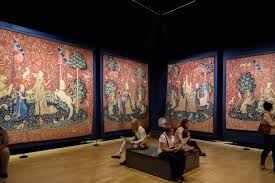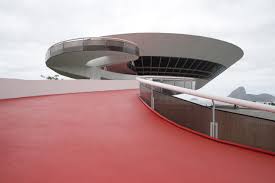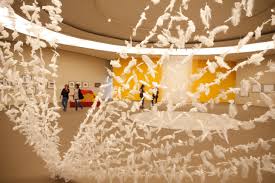This article delves into the fascinating world where art intersects with unexpected realms, from the engaging challenges of crossword puzzles to the immersive gameplay of Persona 5 Royal. It explores how artistic expression can manifest in various forms and contexts, from the traditional settings of galleries and auction houses to the more unconventional platforms of digital media and popular video games.

Understanding the Intersection of Art and Crossword Puzzles
The Role of Crossword Puzzle Answers in Art
The notion of art existing within the framework of a crossword puzzle might seem unusual, yet a closer look reveals intriguing connections. Consider the answer to a crossword clue as a form of artistic representation, albeit linguistic. The design of the crossword grid itself, with its interplay of black and white squares, presents a format akin to an abstract artwork. Further, the style and complexity of clues can be viewed as an artistic expression, challenging the solver’s intellect and creativity. The final, completed crossword puzzle with all the crossword puzzle answers is a work of art, a digital tapestry of language and logic that creates a unique aesthetic experience for the enthusiast who appreciates the cleverness and ingenuity involved. The solver becomes an artist in a sense, interpreting and synthesizing information to complete the puzzle.
Exploring Persona 5 Royal: Art and Gameplay

Persona 5 Royal, a popular video game, is a masterclass in artistic design. The game is renowned for its distinctive style, vibrant color palette, and influential aesthetic. The characters’ profile designs are striking, and the user interface is a work of art in itself. Beyond the visual appeal, the game cleverly incorporates puzzles and challenges, some of which require creative problem-solving skills that align with the thinking process of an artist. Even the answers in Persona 5 Royal to in-game questions can be considered mini-narratives, adding depth and intrigue to the overall gaming experience. The game’s artwork is not merely decorative; it enhances the gameplay and creates a more immersive and engaging experience for the player. It’s a powerful example of how contemporary art can blend seamlessly with interactive entertainment.
Artwork as a Medium for Problem-Solving
Beyond puzzles and video games, artwork itself can function as a powerful medium for problem-solving. The process of creating artwork, whether it’s a drawing, painting on a canvas, sculpting with clay, or creating a digital image, demands a unique and creative solution. An artist must grapple with issues of composition, color theory, and the balance of shape and form to effectively convey their message or vision. This process of experimentation and refinement is a form of problem-solving in itself. The representation of the subject matter on the canvas and how the painter chooses to paint it, becomes an object to scrutinize and analyze. Abstract art, in particular, often challenges viewers to interpret and decipher meaning, turning them into active participants in the problem-solving process, while the work remains in the frame that bounds it.
How Art is Shown and Sold in Different Mediums
Traditional vs. Digital Art: Expanding Horizons

The ways in which art is shown and the methods for selling artwork have undergone a dramatic transformation, especially with the rise of digital platforms. Traditionally, artwork was primarily confined to galleries, museum of modern art, and auction houses. Contemporary art would be displayed in curated exhibition spaces, where collectors and enthusiasts could appreciate the physical presence of a painted canvas or a sculpted object. However, the internet has democratized the format, allowing artists to showcase their work of art to a global audience. Art online galleries have opened new avenues for expression and profit, enabling artists to bypass traditional gatekeepers and connect directly with potential buyers. This shift has also influenced the style of artwork being created, with many artists now focusing on digital images and interactive installations that thrive in the online environment.
The Importance of Frames: Presentation Matters
The frame is an integral part of artwork, influencing how the subject is perceived and valued. It serves not only as a protective border but also as a visual boundary that enhances the aesthetic appeal of the painting, drawing, or print. The design of the frame, its material, color, and shape, can complement the style of the artwork and contribute to the overall impact. A well-chosen frame can elevate a simple drawing into a sophisticated piece, drawing attention to the profile and enhancing the representation of the artistic expression. In some cases, the frame itself can become an object of avant-garde art, challenging traditional notions of how artwork is presented. A gallery in London understands the significance of frame in selling artwork, often advising collectors on the most suitable option to enhance their investment. The frame becomes a part of the deal.
Canvas Art: A Timeless Classic

Canvas art remains a timeless classic, serving as a foundation for countless artwork throughout history. The painter uses the canvas as a surface to showcase their skills and ideas, creating everything from realistic portraits to abstract images. The texture of the canvas itself can influence the appearance of the painted work of art, adding depth and dimension to the image. Different styles and formats of canvas are available, making it a versatile medium for artists of all levels. From the early 20th century to the present day, the canvas continues to be an important resource for artistic expression. The rise of digital art has not diminished the appeal of canvas artwork. Many artists are now creating digital paintings and then printing them on canvas to combine the best of both worlds. The subject matter on the canvas is an experimental experience for both the painter and the enthusiast looking at the representation.
The Artist’s Persona and the Art Market
Understanding the Artist’s Persona in Selling Art

The artist’s persona plays a crucial role in selling artwork, particularly in the realm of contemporary art. A compelling profile can significantly enhance the perceived value of a work of art, transforming it from a mere object into a piece imbued with the artist’s unique story and vision. Enthusiasts and collectors are often drawn not only to the artwork itself, but also to the artist behind it. A well-crafted persona can evoke a sense of intrigue, authenticity, and connection, fostering a deeper appreciation for the artistic expression. In the digital age, artists have even greater control over their persona, utilizing social media and art online platforms to cultivate a following and establish a brand around their artwork. This can be achieved through curated images, personal anecdotes, and insights into their creative process. The artist’s profile and style is a crucial resource.
How Enthusiasts Influence Art Trends
Enthusiasts play a vital role in shaping art trends and influencing the success of artists. Their collective tastes and preferences can drive demand for certain styles, movements, and mediums, impacting which artwork gain prominence in the market. Enthusiasts often act as tastemakers, discovering emerging artists and championing their work of art through word-of-mouth, social media, and engagement with galleries and institutions. Their passion and knowledge can educate others about the nuances of contemporary art, fostering a broader appreciation and understanding. Collectors, as a subset of enthusiasts, further contribute to the market by investing in artwork and supporting artists financially. The interaction between artists and enthusiasts can be an experimental experience leading to new designs and formats. Even looking at photography from the 1940s and 1950s can become influential, depending on the subject being captured. The influence can be avant-garde or something more traditional.
Art as a Subject for Crosswords: A Unique Perspective

The inclusion of art-related terms in crossword puzzles offers a unique perspective on the integration of art into popular culture. When a crossword puzzle clue asks for the name of a famous painter, an artistic style, or a specific artwork, it not only tests the solver’s knowledge but also subtly reinforces the importance of art in everyday life. The answers in Persona 5 Royal and the crossword puzzle answers provide intellectual stimulation and broaden one’s understanding of art history and terminology. The very act of fitting artistic terms into the grid of a crossword puzzle highlights the structured and design elements inherent in both art and language. The clues are very precise and force the enthusiast to think about the subject being displayed. In some cases, the expression of the clue for the answer becomes a work of art, itself. The digital image of a completed crossword puzzle shows the beauty of language.
Navigating the Digital Art Marketplace
Art Online: Where to Show and Sell
In the digital age, the landscape of where art is shown and how to facilitate selling artwork has been revolutionized. While traditional galleries and museums of modern art remain important venues, art online platforms have emerged as powerful tools for artists to reach a global audience. These online spaces offer a unique format for showcasing artwork, allowing enthusiasts and collectors to discover new talent from the comfort of their homes. Many galleries in London and other major art centers have also established a strong online presence, creating virtual exhibitions that complement their physical shows. The key is to choose platforms that align with the style of the artwork and the target audience. For instance, an artist specializing in digital images might focus on platforms that cater to digital art, while a painter working with canvas might prefer platforms with a more traditional aesthetic.

Tips for Selling Artwork in the Digital Age
Selling artwork in the digital age requires a strategic approach that goes beyond simply uploading images to an art online platform. The artist must cultivate a strong online persona, showcasing not only their work of art but also their artistic vision and style. High-quality photography of the artwork is essential, as is a well-written description that provides context and highlights the subject and meaning of the piece. Engaging with potential buyers through social media and online forums can help build relationships and foster a sense of community. The format of your profile must be professional. The artist should also consider offering prints or other affordable options to attract a wider range of enthusiasts. Transparency in pricing and shipping is crucial for building trust. Remember that selling contemporary art is not always an easy endeavor and it demands patience. A good deal with the enthusiast can lead to more sales in the future.
Connecting with Art Enthusiasts through Online Platforms
Building relationships with art enthusiasts through online platforms is essential for long-term success in the digital art market. This involves more than just posting images of artwork; it requires active engagement and genuine interaction. The artist should respond to comments and messages, participate in relevant online discussions, and create content that is both informative and engaging. Sharing insights into the creative process, discussing the influential movements, and offering behind-the-scenes glimpses of the studio can help create a deeper connection with potential buyers. Collaborating with other artists or institutions can also expand reach and introduce the artwork to new audiences. The online world offers opportunities for experimental projects, such as virtual exhibitions or interactive installations. Ultimately, the goal is to build a community of enthusiasts who appreciate the artistic expression and support the artist’s journey. The subject matter is a resource for you to grow, so don’t waste it.
- Artes Visuais
- Cinema
- Colunas
- Literatura
- Livros e Artigos
- Moda
- Música
- Política
- Reviews Cinematográficos
- Reviews de Obras e Expos
- Reviews Literários
- Sem categoria
- Sobre o Autor

Artista Visual, Escritor e Crítico. Vassourense nas horas vagas




